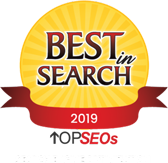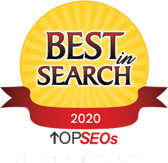Unveiling the True Cost: How Much Does SEO Impact Your Business?
In the ever-evolving digital landscape, businesses increasingly recognize the importance of Search Engine Optimization (SEO) in establishing a robust online presence. However, a common question is, “How much does SEO cost, and is it a worthwhile investment?” In this comprehensive guide, we’ll delve into the various factors influencing the cost of SEO, the different pricing models, and why allocating a budget for SEO is crucial in today’s competitive digital market.
Understanding the Components of SEO Costs
Many factors influence SEO costs, each playing a crucial role in determining the overall investment required. Here are the key components to consider:
1. Scope of the Project: Your website’s size and complexity significantly impact the SEO cost. Larger websites or those with extensive content may require more time and resources for optimization.
2. Competitive Landscape: The level of competition in your industry and target keywords directly influences the effort and resources needed to achieve top rankings. High-competition niches may require a more substantial investment.
3. Keyword Research: Thorough keyword research is the foundation of effective SEO. Investing in comprehensive keyword analysis helps identify your business’s most relevant and high-performing keywords.
4. On-Page Optimization: Optimizing your website’s structure, content, and meta tags is a fundamental aspect of SEO. Costs may vary based on the extent of on-page optimization required.
5. Link Building: A solid backlink profile is crucial for SEO success. The cost of acquiring high-quality backlinks, whether through outreach, content creation, or partnerships, contributes to the overall budget.
6. Content Creation: Quality content is at the heart of SEO. Creating engaging, informative, and shareable content incurs writing, editing, and multimedia production costs.
7. Technical SEO: Addressing technical aspects like site speed, mobile optimization, and crawlability impacts search engine rankings. Costs associated with technical SEO depend on the complexity of your website.
8. Monitoring and Reporting: Regular monitoring, analysis, and reporting are essential for measuring SEO performance. Tools and resources for tracking results contribute to overall costs.
SEO Pricing Models
SEO agencies and consultants typically offer various pricing models, each catering to different business needs and budgets. The most common models include:
1. Hourly Rates: Some SEO professionals charge an hourly rate for their services. This model is suitable for smaller projects or businesses with specific needs.
2. Project-Based Pricing: A project-based pricing model may be applied for well-defined projects with clear objectives. This allows businesses to budget for a specific scope of work.
3. Monthly Retainers: Many SEO agencies offer ongoing services through monthly retainers. This model provides a more comprehensive and continuous approach to SEO, addressing evolving needs over time.
4. Performance-Based Pricing: In some cases, SEO professionals tie their compensation to the campaign’s performance, such as achieving specific ranking milestones or traffic goals. However, this model is less common due to the unpredictable nature of SEO outcomes.
The Realities of SEO Budgeting
Allocating a budget for SEO is not just about meeting immediate needs; it’s an investment in the long-term success of your online presence. Here’s why budgeting for SEO is crucial:
1. Long-Term Benefits: SEO is a cumulative effort that builds over time. While immediate results may not be apparent, the long-term benefits of organic traffic, brand visibility, and authority are substantial.
2. Competitive Edge: In a crowded digital space, businesses that invest in SEO gain a competitive edge. Ranking high in search engine results enhances brand credibility and attracts a steady stream of qualified leads.
3. Adaptation to Algorithm Changes: Search engines frequently update their algorithms. An ongoing SEO strategy allows businesses to adapt to these changes and maintain or improve their rankings.
4. Measurable ROI: Unlike traditional advertising, SEO outcomes are highly measurable. Detailed analytics provide insights into the impact of your investment, helping you refine strategies for optimal results.
5. Targeted Traffic: SEO focuses on attracting users actively searching for products or services related to your business. This targeted traffic will more likely convert into customers, making your investment more valuable.
Tips for Budgeting and Maximizing ROI
1. Set Clear Goals: Define specific, measurable goals for your SEO campaign. Clear objectives guide your budget allocation, whether it’s increased organic traffic, higher rankings, or improved conversion rates.
2. Prioritize Strategies: Identify your business’s most impactful SEO strategies. Prioritize efforts based on your goals and budget constraints.
3. Quality Over Quantity: Emphasize the quality of your SEO efforts rather than sheer quantity. Quality content, relevant keywords, and authoritative backlinks have a more significant impact on rankings.
4. Stay Informed: SEO is dynamic, with trends and algorithms evolving constantly. Stay informed about industry changes and adjust your strategy accordingly.
5. Monitor and Adjust: Regularly monitor the performance of your SEO efforts. Analyze data, track key metrics, and be ready to adjust your strategy based on insights and changing business needs.
Conclusion: Investing Wisely in SEO
So, how much does SEO cost? The answer depends on various factors, and there’s no one-size-fits-all solution. However, what remains consistent is the value of SEO as a long-term investment in your business’s online success. By understanding the components of SEO costs, exploring different pricing models, and recognizing the importance of budgeting, you can make informed decisions that drive meaningful results for your business. Remember, in the ever-evolving digital landscape, strategic and well-budgeted SEO is not just an expense—it’s an investment in your business’s sustained growth and visibility.





























